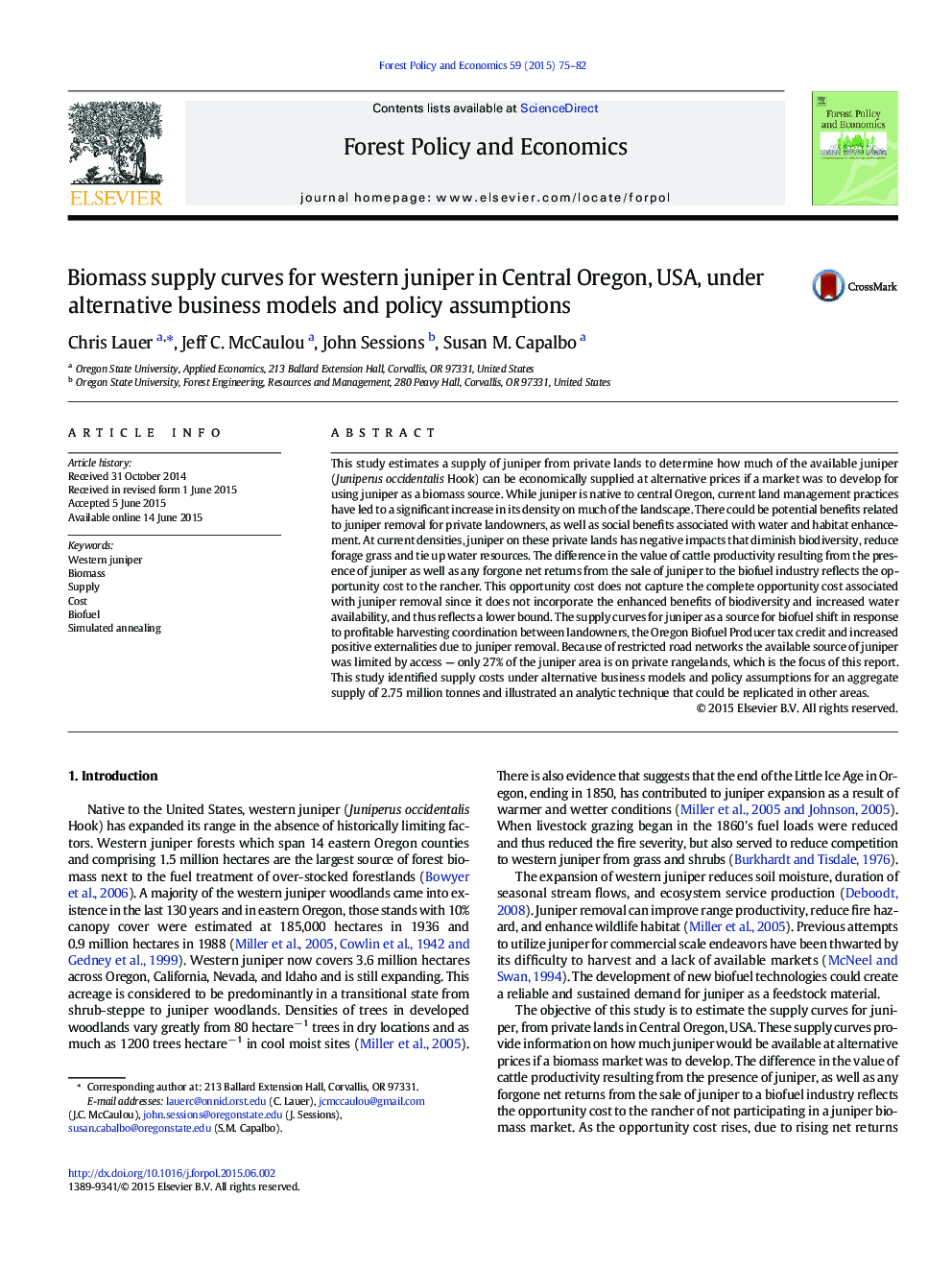| کد مقاله | کد نشریه | سال انتشار | مقاله انگلیسی | نسخه تمام متن |
|---|---|---|---|---|
| 91740 | 159839 | 2015 | 8 صفحه PDF | دانلود رایگان |
• Estimate available supply of juniper biomass from private land in Central Oregon
• Alternative market structures are explored and compared.
• Positive externalities of juniper removal increase viability as a source of biomass.
• Demonstrate cost saving associated with cooperation between multiple landholders
• Heuristic techniques used to solve spatial optimization problem
This study estimates a supply of juniper from private lands to determine how much of the available juniper (Juniperus occidentalis Hook) can be economically supplied at alternative prices if a market was to develop for using juniper as a biomass source. While juniper is native to central Oregon, current land management practices have led to a significant increase in its density on much of the landscape. There could be potential benefits related to juniper removal for private landowners, as well as social benefits associated with water and habitat enhancement. At current densities, juniper on these private lands has negative impacts that diminish biodiversity, reduce forage grass and tie up water resources. The difference in the value of cattle productivity resulting from the presence of juniper as well as any forgone net returns from the sale of juniper to the biofuel industry reflects the opportunity cost to the rancher. This opportunity cost does not capture the complete opportunity cost associated with juniper removal since it does not incorporate the enhanced benefits of biodiversity and increased water availability, and thus reflects a lower bound. The supply curves for juniper as a source for biofuel shift in response to profitable harvesting coordination between landowners, the Oregon Biofuel Producer tax credit and increased positive externalities due to juniper removal. Because of restricted road networks the available source of juniper was limited by access — only 27% of the juniper area is on private rangelands, which is the focus of this report. This study identified supply costs under alternative business models and policy assumptions for an aggregate supply of 2.75 million tonnes and illustrated an analytic technique that could be replicated in other areas.
Journal: Forest Policy and Economics - Volume 59, October 2015, Pages 75–82
